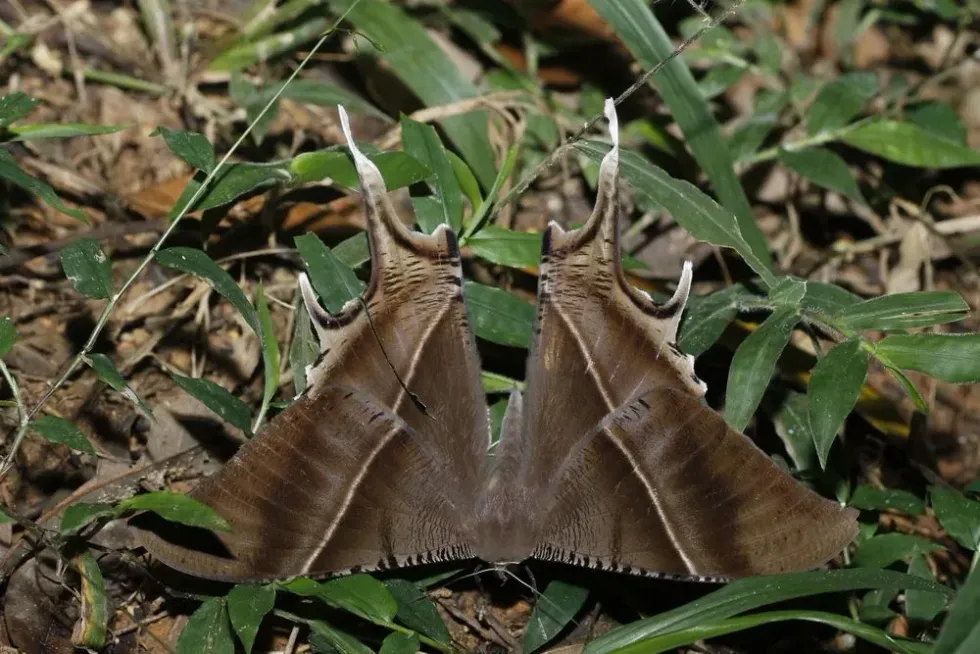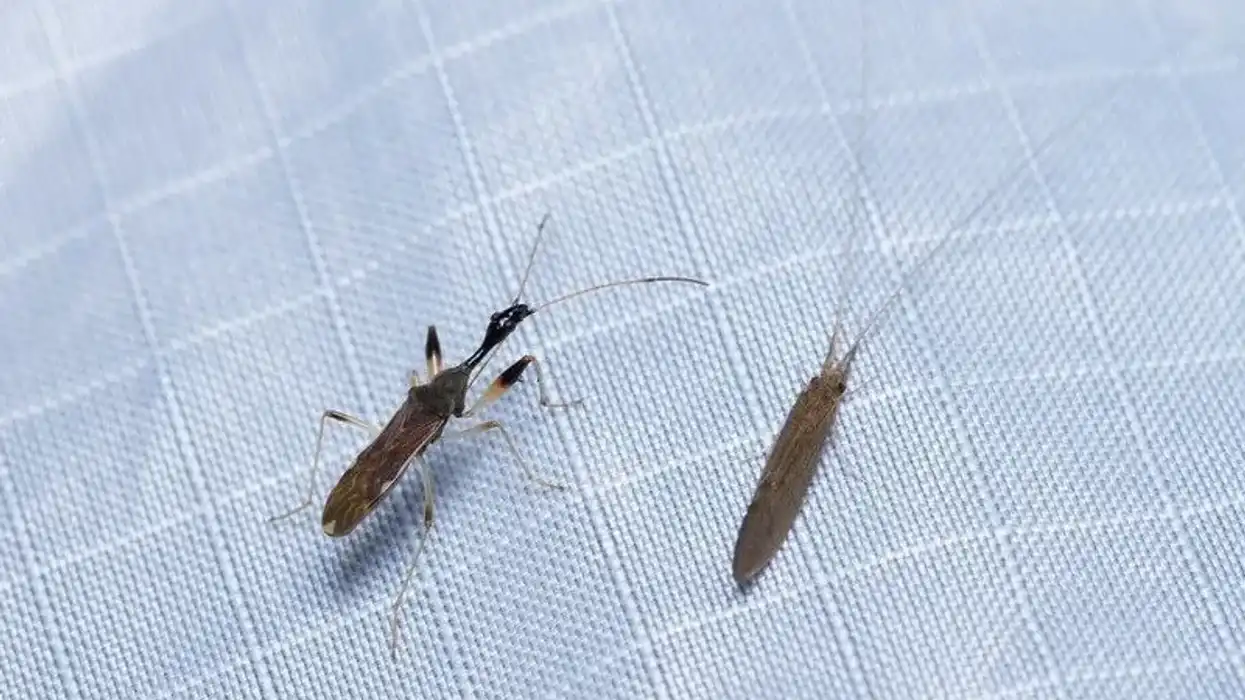The New Zealand long-tailed bat is one of 15 bats that belongs to the genus Chalinolobus. It is said that long-tailed bats came to New Zealand much later than short-tailed bats, during the Ice Age 1-2 million years ago.
They flew over the Tasman Sea in the same direction as a windblown migrant. Long-tailed bats from North Island and South Island were initially classified as two distinct species; they were eventually reclassified as single species in 2018.
As we move into the details of the species, we recommend going through our other articles Indian flying fox and ghost bat for more amazing facts.
Long-Tailed Bat Interesting Facts
What type of animal is a long-tailed bat?
New Zealand long-tailed bat (Chalinolobus tuberculatus) from South Island, is one of 15 bats of the Chalinolobus family, collectively mentioned as wattled bats or pied bats. It is an indigenous bat species to New Zealand along with a lesser short-tailed bat but closely related to five other lobe-lipped or wattled bats in Australia.
What class of animal does a long-tailed bat belong to?
New Zealand's long-tailed bat (Chalinolobus tuberculatus) is classified in the Mammalia class and Chiroptera order of bats. As we all know, bats are the only mammals that have wings and fly.
How many long-tailed bats are there in the world?
The exact distribution of these bat populations throughout New Zealand is unexplored. Department of Conservation researchers, on the other hand, gathering data on these bats populations in its home range found a small population with only approximately 100 bats in the Hanging Rock area.
Where does a long-tailed bat live?
Long-tailed bats are found throughout New Zealand including the South Island and North Island. The native range of these lobe-lipped bats includes the Stewart Island, mainland, the Great Barrier Reef, Kapiti Islands, and Little Barrier Islands. The Whareorino Conservation Area, located in the southern King Country, has the biggest population of these species.
What is a long-tailed bat's habitat?
They live on the over indigenous forests feeding above the treetops, along forest edges, over farms, waterways, and even caves. When it comes to roosting on trees, they prefer low-altitudes near the bottoms of valleys from the woodland edge.
The bats also prefer tall, large-diameter roosts in low-tree-density environments, especially roost over red beech trees or snags. In the South Island, three-quarters of the roost trees were at least a century old. Bats roost in small cavities in trees where the temperature and humidity are high.
Who do long-tailed bats live with?
New Zealand long-tailed bats are mostly communal animals, roosting in small groups of 20–60 bats and switch every night to another tree to roost in. These lobe-lipped bats are also found to share roost along with the lesser short-tailed bats in their native habitat.
How long does a long-tailed bat live?
However, the life expectancy for these bats is unclear, but all we know is that these species can survive beyond nine years.
How do they reproduce?
These bats can reproduce as soon as their first year, and most female bats have their first pup when they are two or three years old. Their breeding season is generally between February and March.
After mating, female species give birth to a single pup during the months of December and January. They protect their young on their own, congregating with other females in maternity roosts of up to 120 individuals. This roost occasionally contains a few adult males and non-reproductive females forming colonies.
These young ones begin to fly roughly 40 days after birth. These pups are expected to be on their individual feeding, ten days after fledging.
What is their conservation status?
As a result of an estimated decline of more than 70%, the Department of Conservation has marked these species as Nationally Critical with the Conservation Dependent qualifier under the New Zealand Threat Classification System. Moreover, they are also classified as Critically Endangered by the IUCN.
As these bat populations are associated with large native forests and rely on old-aged roost trees, It is vital to protect these natural forests.
Long-Tailed Bat Fun Facts
What do long-tailed bats look like?

*This is an image of a lesser short-nosed fruit bat, if you have an image of a long-tailed bat, please let us know at hello@kidadl.com.
New Zealand long-tailed bat (Chalinolobus tuberculatus) of South Island is so tiny that it is smaller than a mouse. These bats are brown in color with short ears and a long tail attached to their rear legs via a patagium.
How cute are they?
These small wattled bats are adorable when discovered in the wild, roosting in cavities of old-aged trees.
How do they communicate?
Like other bats, these long-tailed bats from the South Island use echolocation calls to communicate.
How big is a long-tailed bat?
These little wattled bats are about the size of a mouse, with a wingspan of approximately 9.84 in (250 mm) and small enough to fit in the palm of your hand.
How fast can a long-tailed bat fly?
New Zealand long-tailed bat (Chalinolobus tuberculatus) are masters of flight. They have long finger bones that are joined by thin layers of tissue to form wings that allow them to fly. It has been reported that they can fly at speeds of up to 37.2 mph (59.8 kph).
How much does a long-tailed bat weigh?
New Zealand long-tailed bat (Chalinolobus tuberculatus) weighs 0.28 - 0.42 oz (8–12 g).
What are the male and female names of the species?
Although no specific name is given, a male species is known as a male bat, and a female species is known as a female bat. However, a group of bats is referred to as a colony, cloud, or cauldron.
What would you call a baby long-tailed bat?
A baby of long-tailed bats is referred to as a pup.
What do they eat?
These wattled bats are insectivores that consume a lot of insects in the environment. Their primary food source is flies, but moths and worms are also part of their diet.
Are they dangerous?
Long-tailed bats are not dangerous to humans unless we interrupt and frighten them.
Would they make a good pet?
It is always recommended to leave them in their natural habitat as they are complex creatures. In general, they usually roost in colonies along with other mates in their home range; moreover, they do not do well when kept in a cage.
Did you know...
There were three bat species in New Zealand, but as of today, only two remain, one is a long-tailed bat, and the other is a lesser short-tailed bat. As New Zealand's third species, the greater long-tailed bat, or large long-tailed bat, has recently gone extinct.
The long-tailed bats are more miniature than other species of lesser short-tailed bats. Long-tailed bats were often seen in colonies of hundreds or thousands throughout New Zealand including the South Island and North Island in the 1800s.
However, by 1930 they became rare in several locations.
The long-tailed bats are listed as nationally critical by the Department of Conservation, whereas the short-tailed bats are listed as nationally endangered. Over the past few years, various actions to protect these wattled bats in their native forests have been taken to restore their population.
Fraternal myotis, Godman's long-tailed bats, The lesser long-tailed bat, the greater long-tailed bat, and mouse-tailed tails are collectively designated long-tailed bats. All these bats are highly active during the night.
Is the long-tailed bat endangered?
The long-tailed bat is rapidly becoming Endangered as these bats are only confined to native forests of New Zealand including the South Island and North Island and stick to roosts in cavities of the age-old trees, and these trees are becoming exceptionally rare.
This loss of roost trees is causing habitat loss and degradation in their population due to land development and under forest management practices.
What's unique about long-tailed bats?
The most unique thing about long-tailed bats is that they do not hibernate, but when it is cold and food is scarce, they conserve energy by torpor. Torpor occurs more frequently in its similar species, short-tailed bats, and can even last up to ten days.
Here at Kidadl, we have carefully created lots of interesting family-friendly animal facts for everyone to discover! For more relatable content, check out these hoary bat facts and Mexican free-tailed bat facts for kids.
You can even occupy yourself at home by coloring in one of our free printable red bat coloring pages.










